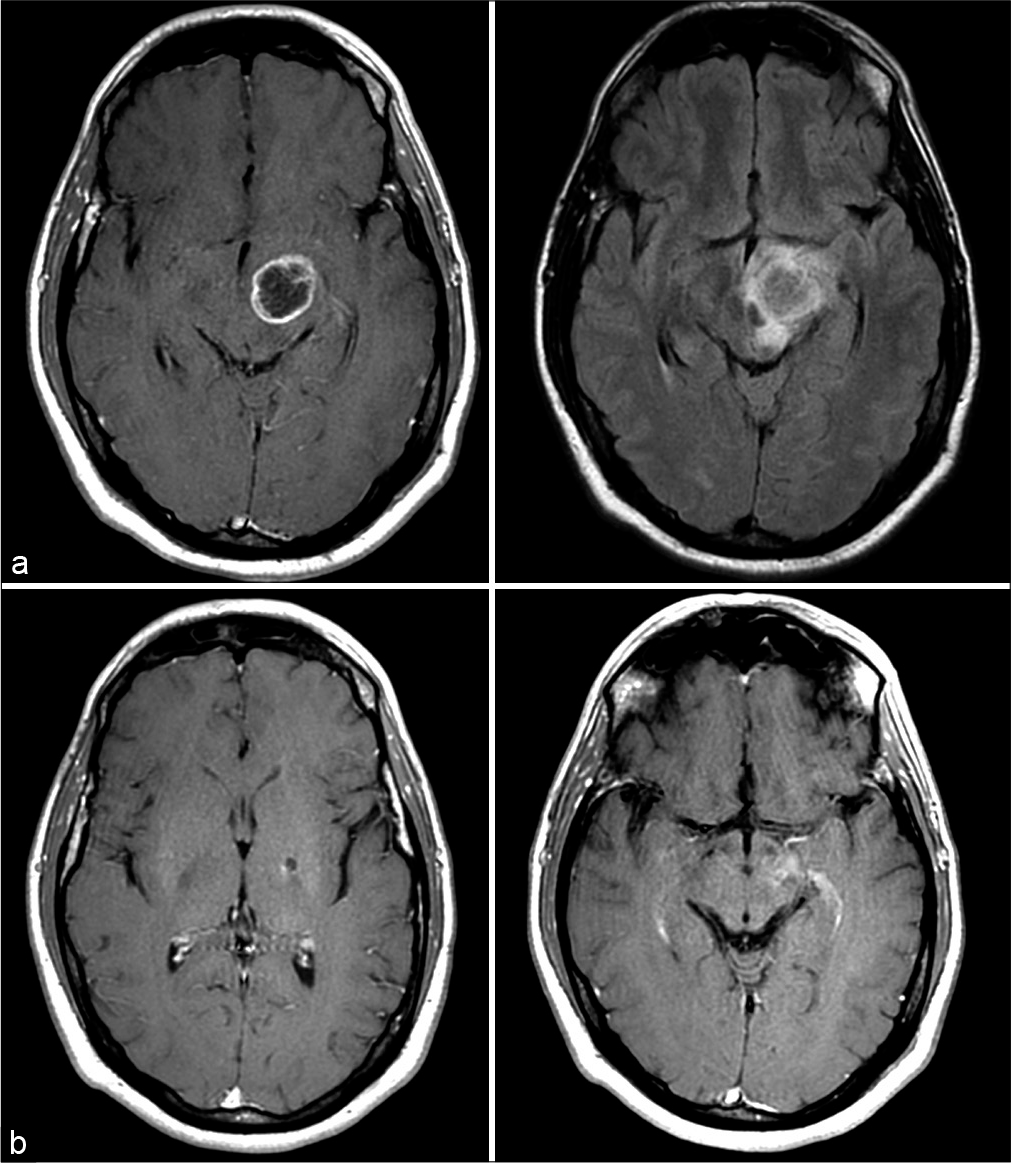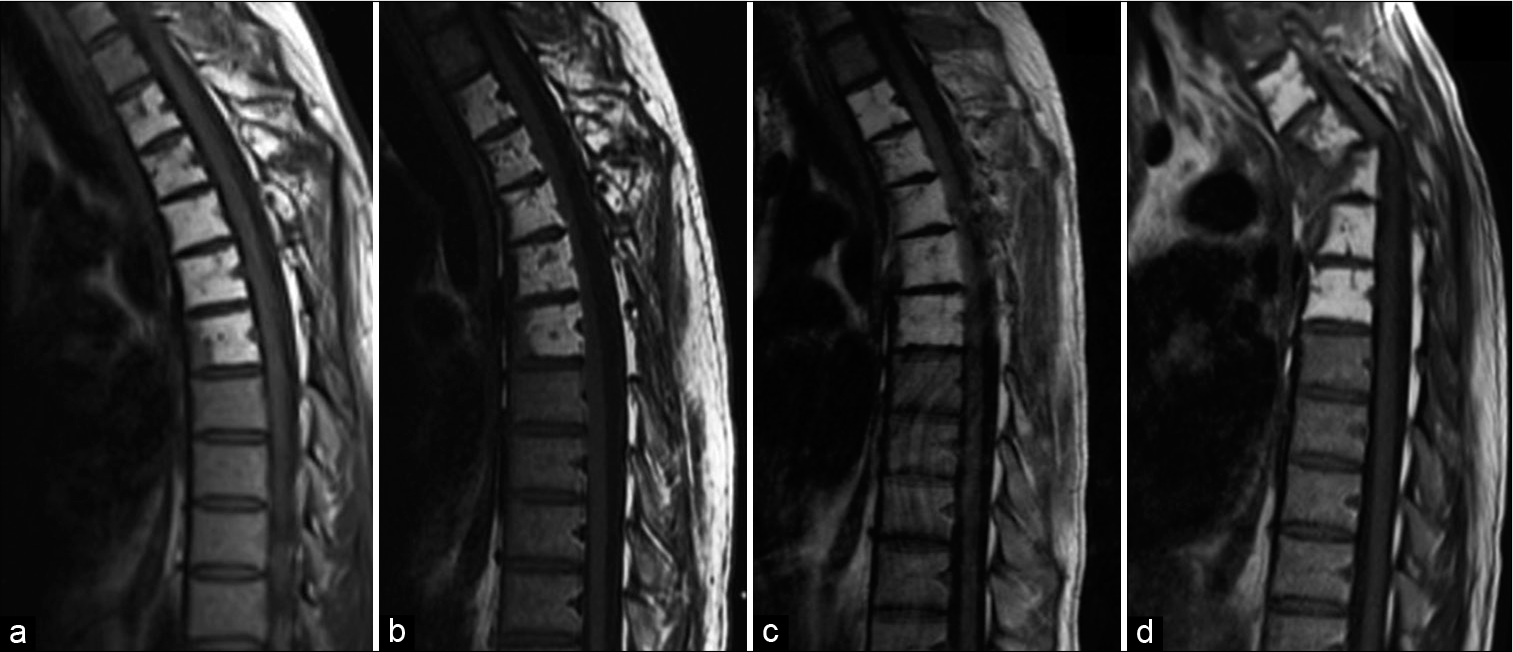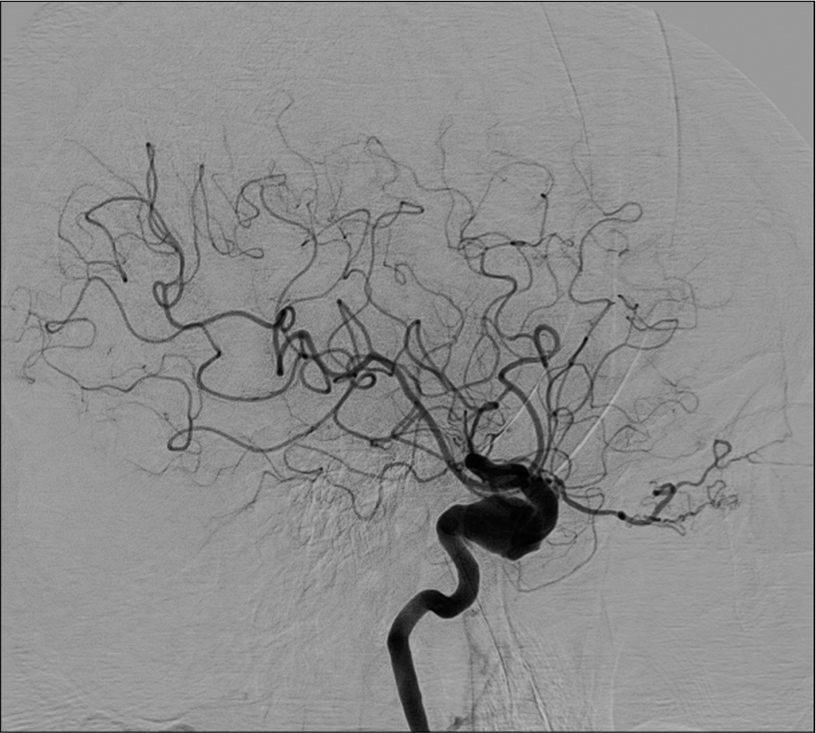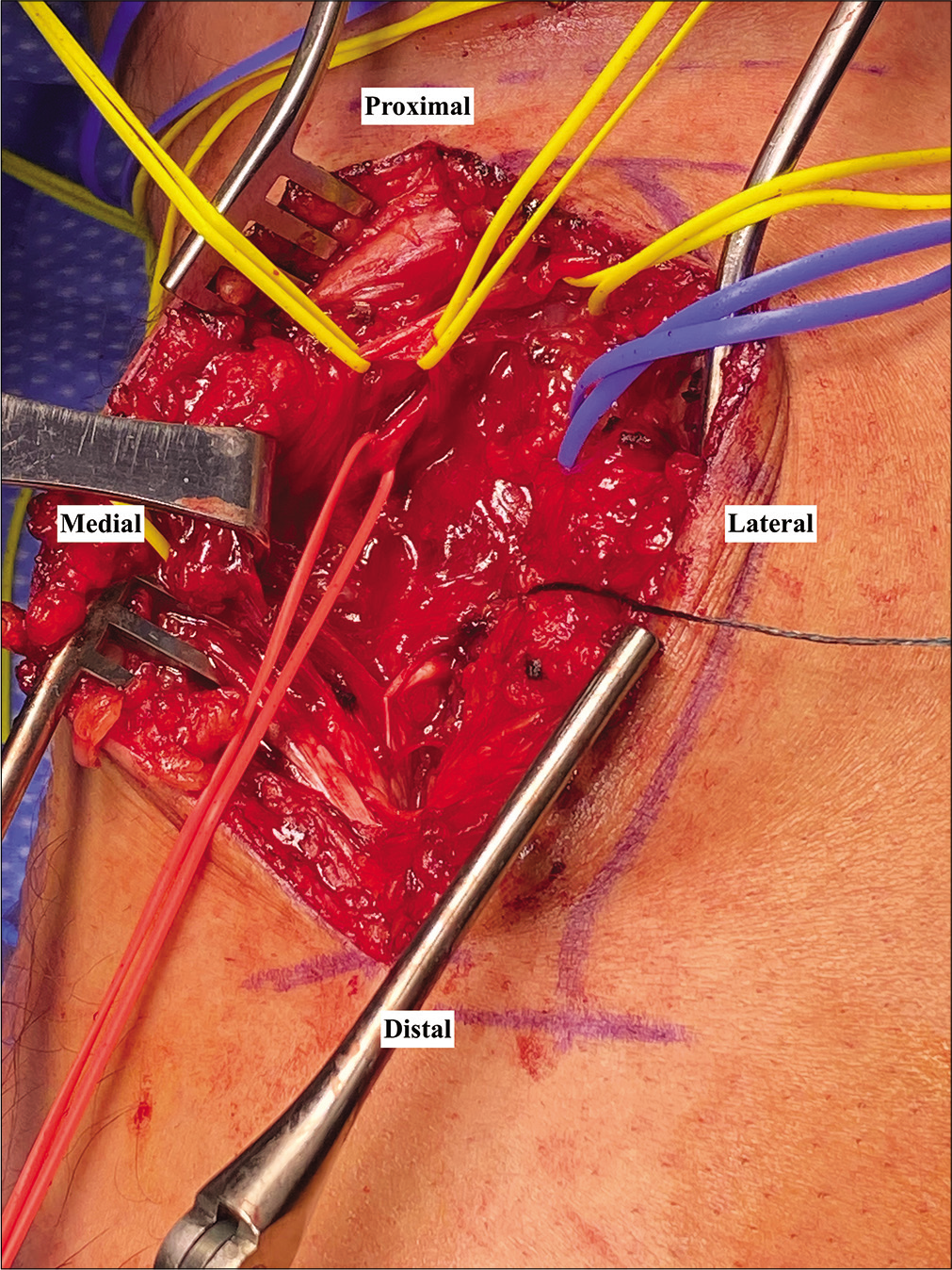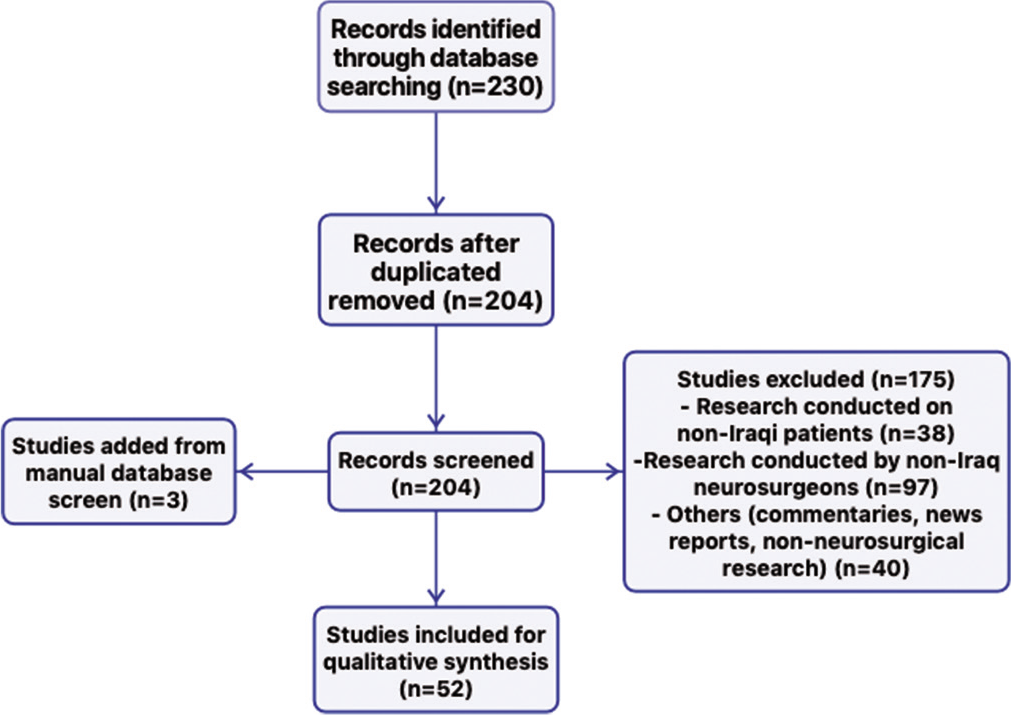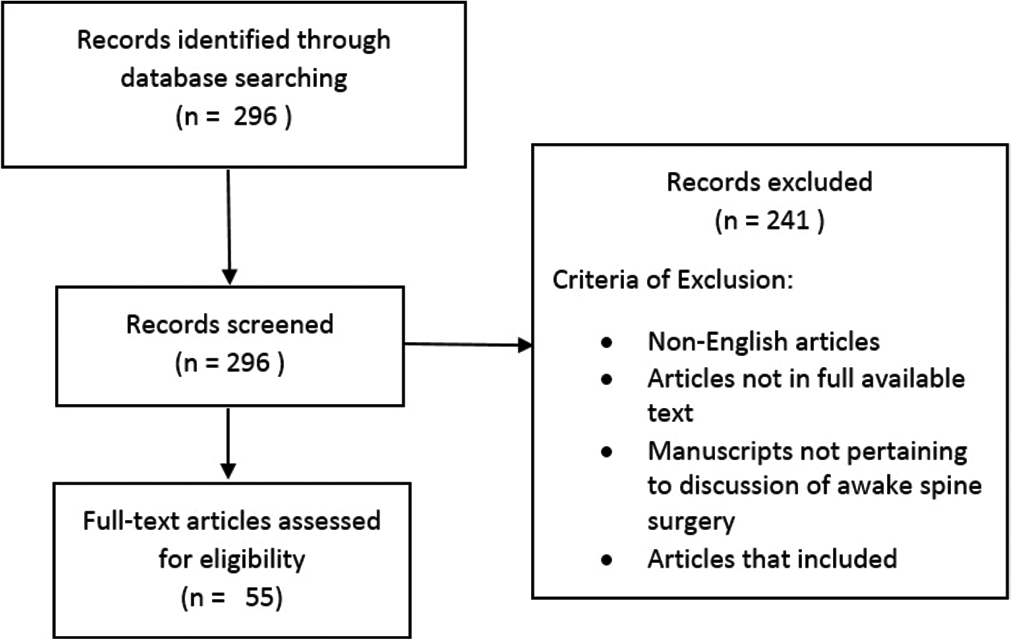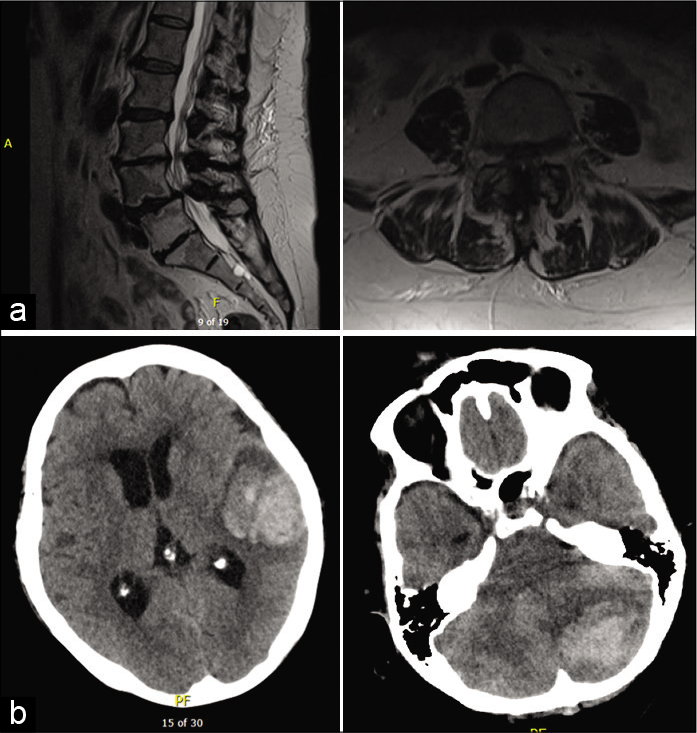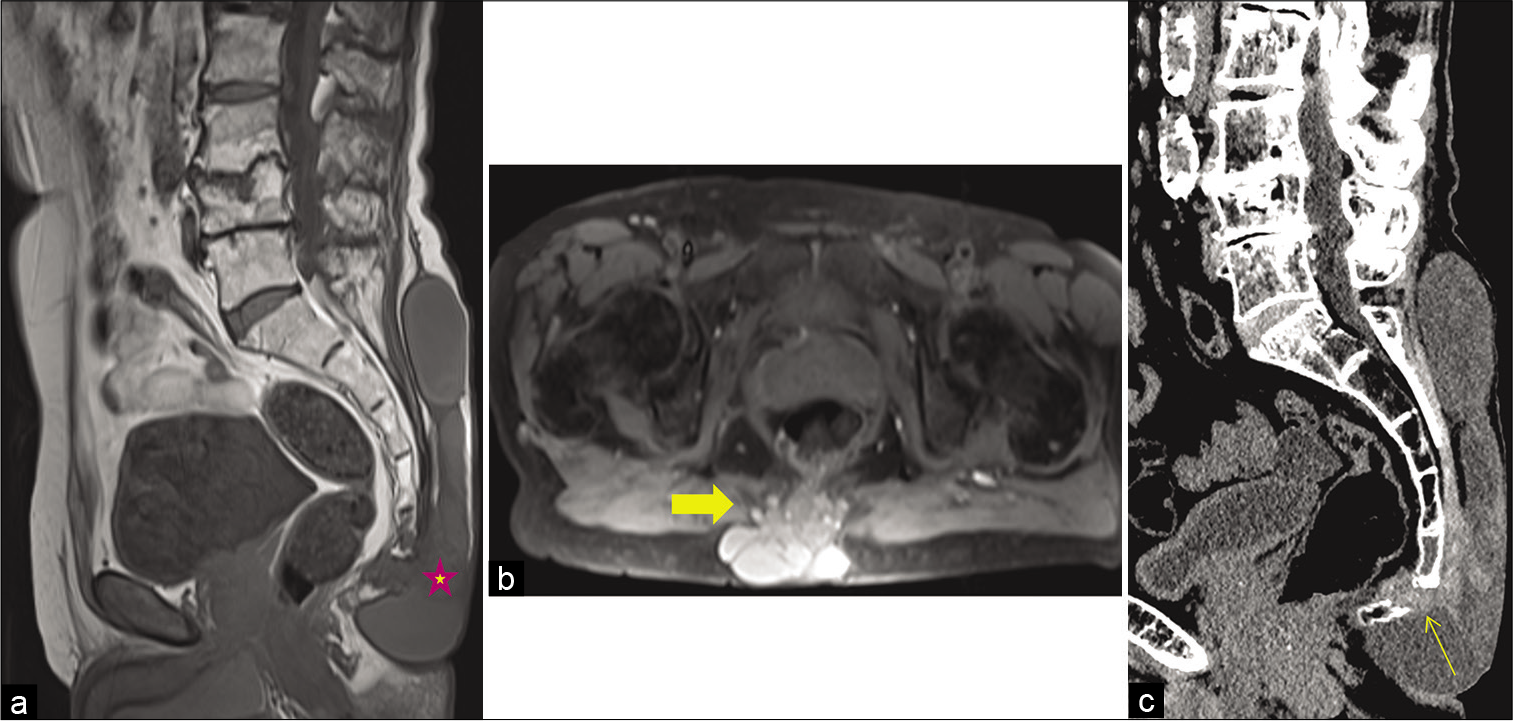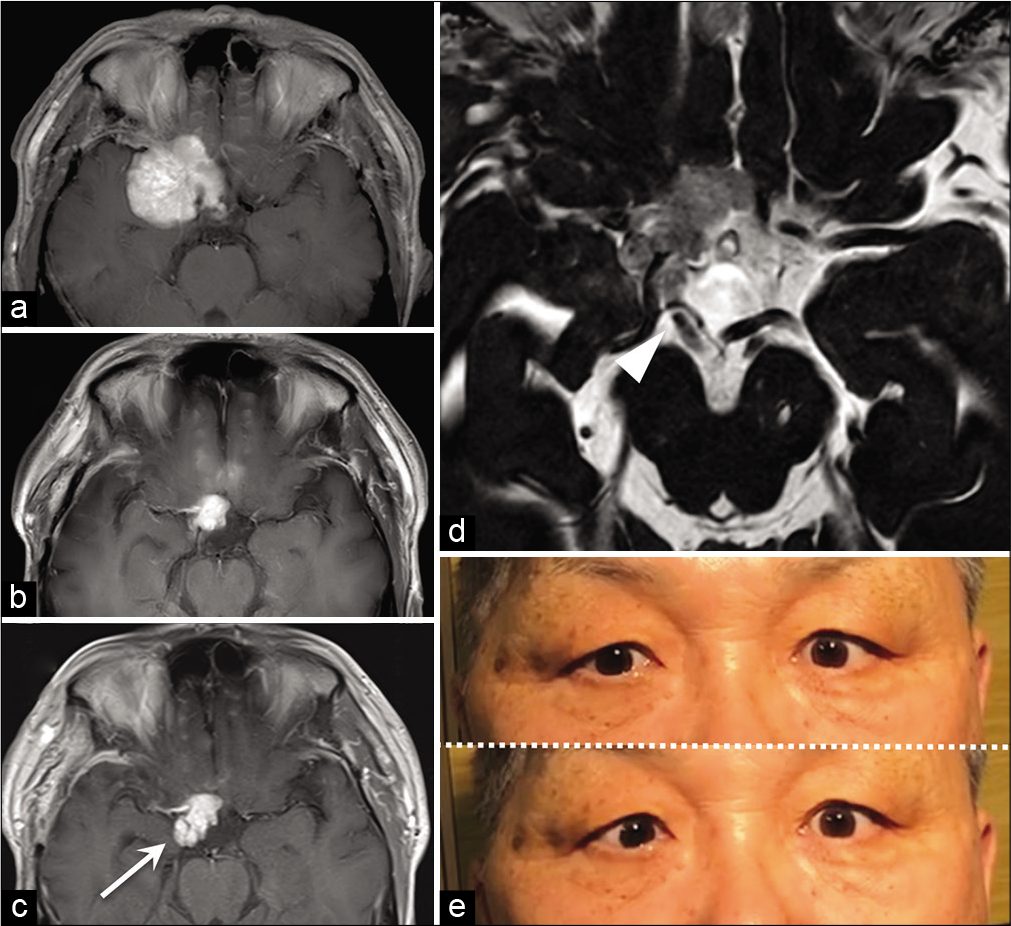Prolonged survival after laser interstitial thermal therapy in glioblastoma
Date of publication: 17-May-2021
Background: Glioblastoma (GBM) is the most common primary malignant brain tumor in adults. Management includes surgical resection followed by chemoradiation, and prognosis remains poor. Surgical resection is not possible for some deep-seated or eloquent tumors. Laser interstitial thermal therapy (LITT) has emerged as a new, minimally invasive surgical option for deep-seated GBM.
Utility of the spinal instability neoplastic score to identify patients with Gorham-Stout disease requiring spine surgery
Date of publication: 17-May-2021
Background: Gorham-Stout disease (GSD) is a rare syndrome presenting with progressive osteolysis which in the spine can lead to cord injury, instability, and deformity. Here, the early spine surgery may prevent catastrophic outcomes.
Interscapular pain with Chiari Type I malformation attributed to atypical spinal accessory neuralgia
Date of publication: 17-May-2021
Background: The spinal accessory nerve (XI) is traditionally considered a motor nerve. However, as some studies have documented the presence of nociceptive fibers in XI, vascular XI neural compression may lead to an atypical neuralgia.
Use of dual-energy computed tomography post endovascular treatment of cerebral aneurysm
Date of publication: 17-May-2021
Background: Along with surgical clipping, endovascular management is one of the mainstay treatment options for cerebral aneurysms. However, immediate post procedural imaging is often hard to interpret due to the presence of contrast material. Dual-energy computed tomography (CT) allows differentiation between contrast extravasation and intracranial hemorrhage and this case illustrates the importance of this following endovascular treatment of an unruptured cerebral aneurysm.
Vascular entrapment neuropathy of the tibial nerve within the gastrocnemius muscle
Date of publication: 17-May-2021
Background: Vascular compression is an extremely rare cause of mononeuropathy and compression of selective tibial nerve branches is an additionally a rare finding and makes diagnosis difficult.
PubMed-indexed neurosurgical research productivity of Iraq-based neurosurgeons
Date of publication: 17-May-2021
Background: Research is a central component of neurosurgical training and practice and is increasingly viewed as a quintessential indicator of academic productivity. In this study, we focus on identifying the current status and challenges of neurosurgical research in Iraq.
Awake spine surgery: An eye-opening movement
Date of publication: 10-May-2021
Background: Awake surgery is performed in multiple surgical specialties, but historically, awake surgery in the field of neurosurgery was limited to craniotomies. Over the past two decades, spinal surgeons have pushed for techniques that only require regional anesthesia as they may provide reduced financial burdens on patients, faster recovery times, and better outcomes. The list of awake spine surgeries that have been found in the literature include: laminectomies/discectomies, anterior cervical discectomy and fusions (ACDFs), lumbar fusions, and dorsal column (DC) stimulator placement.
Two cases of supratentorial lobar intracranial hemorrhage following lumbar decompression and stabilization
Date of publication: 10-May-2021
Background: Lumbar spine surgery with or without intraoperative dural tear (DT) may contribute to postoperative subdural hematomas and/or cerebellar intracranial hemorrhages (ICHs). Here, we present two patients, one with and one without an intraoperative DT occurring during lumbar surgery, both of whom developed acute postoperative supratentorial ICHs.
Bursitis of the coccyx in an adult with rheumatoid arthritis mimicking a sacrococcygeal meningocele
Date of publication: 10-May-2021
Background: Bursitis is a chronic inflammatory condition characterized by the deposition of cholesterol, macrophage infiltration, and bursal wall calcification. Bursitis is, however, rarely found in the sacrococcygeal region where it may present as a space-occupying mass.
Ocular neuromyotonia caused by a recurrent sphenoidal ridge meningioma
Date of publication: 10-May-2021
Background: Ocular neuromyotonia (ONM) is a rare ocular motility disorder characterized by involuntary paroxysmal extraocular muscle contraction and is caused by radiation therapy, vascular compression, and inflammatory disease. This study includes a rare case of ONM caused by a recurrent meningioma.


